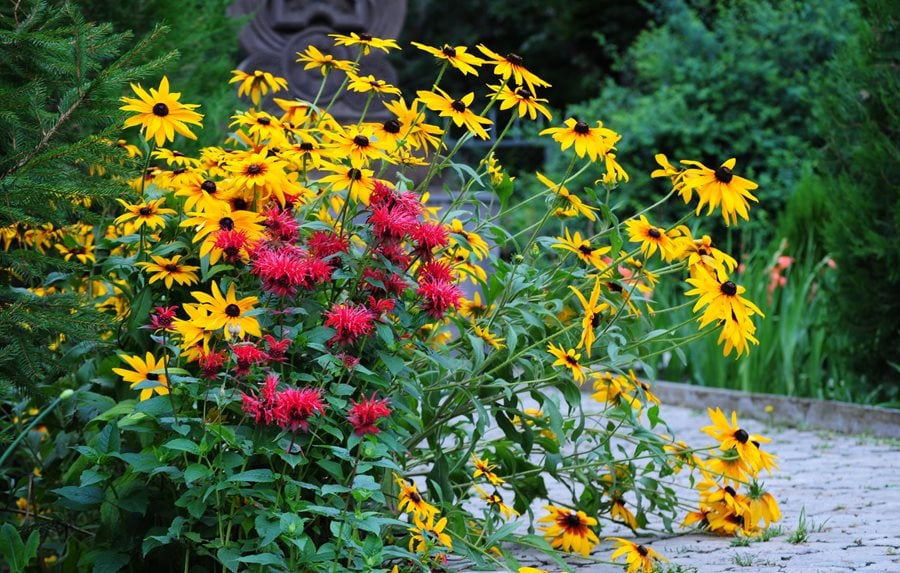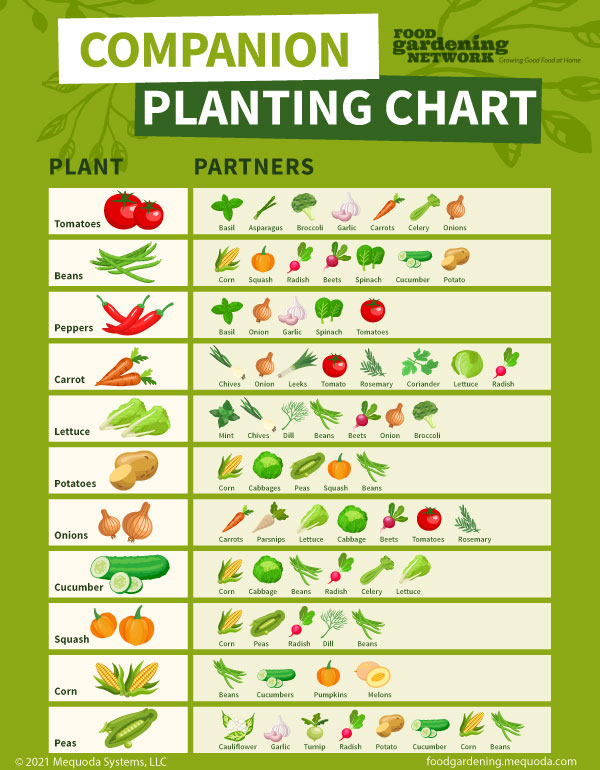
Repels cabbage moth, bean beetles, and carrot flies and attracts pollinatorsīasil, Cilantro, Dill, Marigolds, Nasturtiums, Oregano, Parsley, Peppers, Sage, Thyme, TomatoesĪsparagus, Marigold, Oregano, Peppers, Tomatoesīush Beans, Cabbage Family, Lettuce, Lima Bean, Onion, Radish, Sageīroccoli, Cauliflower, Chives, Cress, Garlic, Kale, Leeks Mustard, Onionsīasil, Bush Beans, Chamomile, Cucumber, Dill, Garlic, Lettuce Marigold, Mint, Onion, Potato, Radish, Rosemary, Sage, Thyme, Tomato Repels ants, white cabbage moths, aphids, and flea beetle Repels aphids, white flies, Japanese beetles, root maggots, and carrot rust fly Repels aphids, potato beetles, and spider mitesĪttracts wasps that eat caterpillars and repels aphids and spider mites Repels aphids, carrot rust fly, and Japanese beetles

Helps repel aphids, asparagus beetles, mites, flies, mosquitoes, and tomato horn worm Will improve the flavor of tomatoes when planted side-by-side

Maximizing space: Companion planting can help you make the most of your garden space by combining plants with different growth habits.Increased pollination: By planting certain plants together, you can attract more pollinators like bees and butterflies to your garden.Improved soil quality: Certain plants help fix nitrogen in the soil, while others can act as natural fertilizers and improve soil structure.Pest control: Some plant combinations can repel pests and reduce the need for pesticides.Whether you’re planting a square foot garden or a traditional garden you’ll want to consider companion planting. It’s a natural and sustainable way to create a thriving garden helping you to avoid the need for pesticides and/or harmful fertilizers. For example, planting basil next to tomatoes can help to repel pests that commonly attack tomato plants, and planting beans with corn can help to provide nitrogen to the soil. The idea is that certain plants have natural synergies and can provide benefits such as pest control, nutrient sharing, and soil improvement when grown together.
#Garden layout companion planting trial
Through trial and error, a concept called companion planting was developed.Ĭompanion planting is a gardening technique where different plants are grown together to improve each other’s growth, health, and yield. Over the years, gardeners have observed how one crop can help or harm another. Neighboring plants can help or hinder the growth and development. The thing is, plants have friends and foes. Companion Planting DefinedĬompanion planting helps vegetables in any garden but it’s especially important whe square foot gardening. I’ve used this approach for over 5 years in my small suburban back yard and am amazed at how much food I can grow in such a small space. It’s a great way to get started with gardening, and perfect for those who want to grow their own veggies but don’t have a lot of room. This allows you to maximize the use of your space and grow a variety of plants in a small area.

Square foot gardening is a method of growing plants in a small space, like a raised garden bed or container, by dividing the area into individual square feet. If you’re not familiar with Square Foot Gardening, let me give you a brief explanation. Companion planting can also add beautiful aroma and color to any garden. Have you ever tried planting a vegetable garden? What about a Square Foot Garden? An easy way to protect your plants, improve flavor, and enhance production is through companion planting.


 0 kommentar(er)
0 kommentar(er)
